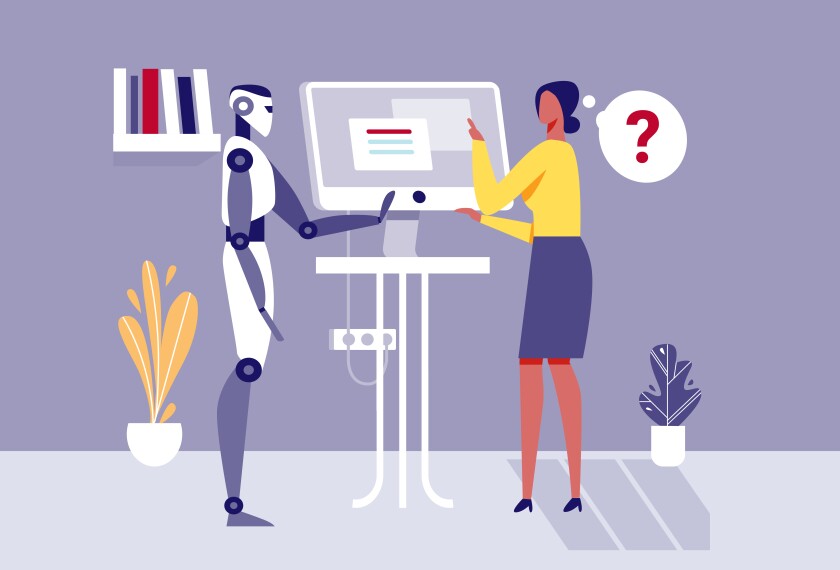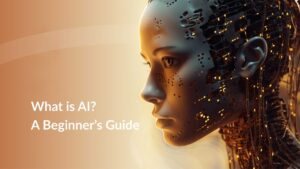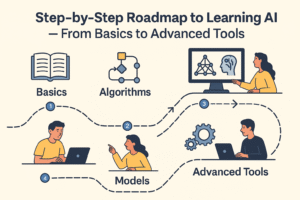
Artificial Intelligence in 2025 feels like the smartphone boom all over again—except instead of just changing how we call and text, it’s rewriting how we work, teach, learn, and even think.
This year’s AI updates aren’t just “cool features” you can ignore until they’re mainstream—they’re fundamental shifts in capability. From GPT-5’s near PhD-level reasoning to Google’s Gemini 2.5, and from Anthropic’s Claude 4 to Mistral Medium 3, AI is becoming sharper, more adaptable, and deeply integrated into both workplaces and classrooms.
If you’re a professional, educator, student, or decision-maker, here’s your 2025 survival (and growth) guide.
The Big Four AI Models Everyone’s Talking About
The 2025 AI race is less about who’s in the lead and more about what each player brings to the table.
GPT-5 (OpenAI)
Think of GPT-5 as the overachiever in class who’s great at everything—reasoning, coding, creative writing, and even nuanced debates. Its ability to “chain” reasoning steps means it can plan multi-stage projects and adapt outputs based on previous interactions.
It also powers Study Mode, OpenAI’s new education-focused feature that helps teachers and students dive into complex topics with personalized, adaptive tutoring.
Gemini 2.5 (Google)
Google’s flagship AI got a reasoning boost that makes it particularly strong for analytical tasks and multilingual work. The Pro variant targets enterprise-level reasoning, while Flash offers lightweight speed for quick decisions and instant responses.
Claude 4 (Anthropic)
Built for reliability and interpretability, Claude 4 is your go-to if you need safe yet deep exploration of topics. Its hybrid Opus and Sonnet variants give businesses and educators a choice between high performance and cost efficiency.
Mistral Medium 3 & Devstral
The open-model champions—fast, affordable, and surprisingly capable for code generation and integration into custom apps. Devstral especially is becoming a favorite among tech teams building specialized workplace tools.
How Workplaces Are Adopting 2025’s AI Tools

In offices around the globe, “AI adoption” is no longer a future plan—it’s the current workflow.
We’ve moved past simple automation into AI agents—programs that can remember, adapt, and execute without constant human nudging.
What’s Changing at Work:
- AI Agents with Long-Term Memory: They remember project histories, client preferences, and past errors—making them more like digital colleagues than tools.
- Cross-Department Integration: Marketing, HR, and engineering teams now share AI-generated insights in real-time.
- ROI-Driven AI: Businesses are focusing on measurable productivity boosts—fewer meetings, faster report generation, and data-driven decision-making.
A McKinsey report this year noted that organizations hitting maturity in AI adoption are seeing 15–40% gains in productivity. But scaling comes with challenges—ethical use, data privacy, and workforce training are still hurdles.
Education’s AI Transformation Is Accelerating
If you thought AI in education was just about “homework help,” 2025 will surprise you.
Key Shifts:
- AI Fluency as a Requirement: Several universities now require students to demonstrate AI tool proficiency before graduation.
- Study Mode & AI Tutors: Tools like ChatGPT’s Study Mode personalize learning to the student’s level, pace, and knowledge gaps.
- Immersive & Inclusive Learning: AI is pairing with VR/AR to create immersive history lessons, realistic science labs, and inclusive content for students with disabilities.
For educators, AI is becoming a co-teacher—grading, generating lesson plans, and even identifying which students might be struggling before test scores reveal it.
Actionable Takeaways for 2025
For Professionals:
- Master AI prompt engineering—knowing how to ask is now as important as knowing the answer.
- Experiment with agents for repetitive workflows—reports, scheduling, and client communications.
For Educators:
- Integrate AI into lesson plans, not as a novelty but as a standard resource.
- Use analytics to spot learning gaps early and personalize support.
For Students:
- Build AI fluency—it’s becoming as essential as Excel was in the 2000s.
- Use AI tools to explore, not replace, your learning process.
FAQs
Q1: How is GPT-5 different from GPT-4?
GPT-5 offers multi-step reasoning, better coding capabilities, and more adaptive outputs, making it more useful for complex work and education tasks.
Q2: Can AI Study Mode help teachers?
Yes—Study Mode can generate tailored lesson plans, quizzes, and explanations that adapt to student performance.
Q3: What is an AI agent in the workplace?
An AI agent is an automated system that performs tasks independently, learns from past interactions, and integrates with business tools.
Q4: Which AI model is best for coding in 2025?
While GPT-5 and Claude 4 lead in reasoning, Mistral Devstral is popular for fast, cost-efficient code generation.
Q5: Why are universities mandating AI fluency?
To prepare graduates for an AI-driven job market, ensuring they can use AI responsibly and effectively.
Also Read: Step-by-Step Roadmap to Learning AI — From Basics to Advanced Tools


